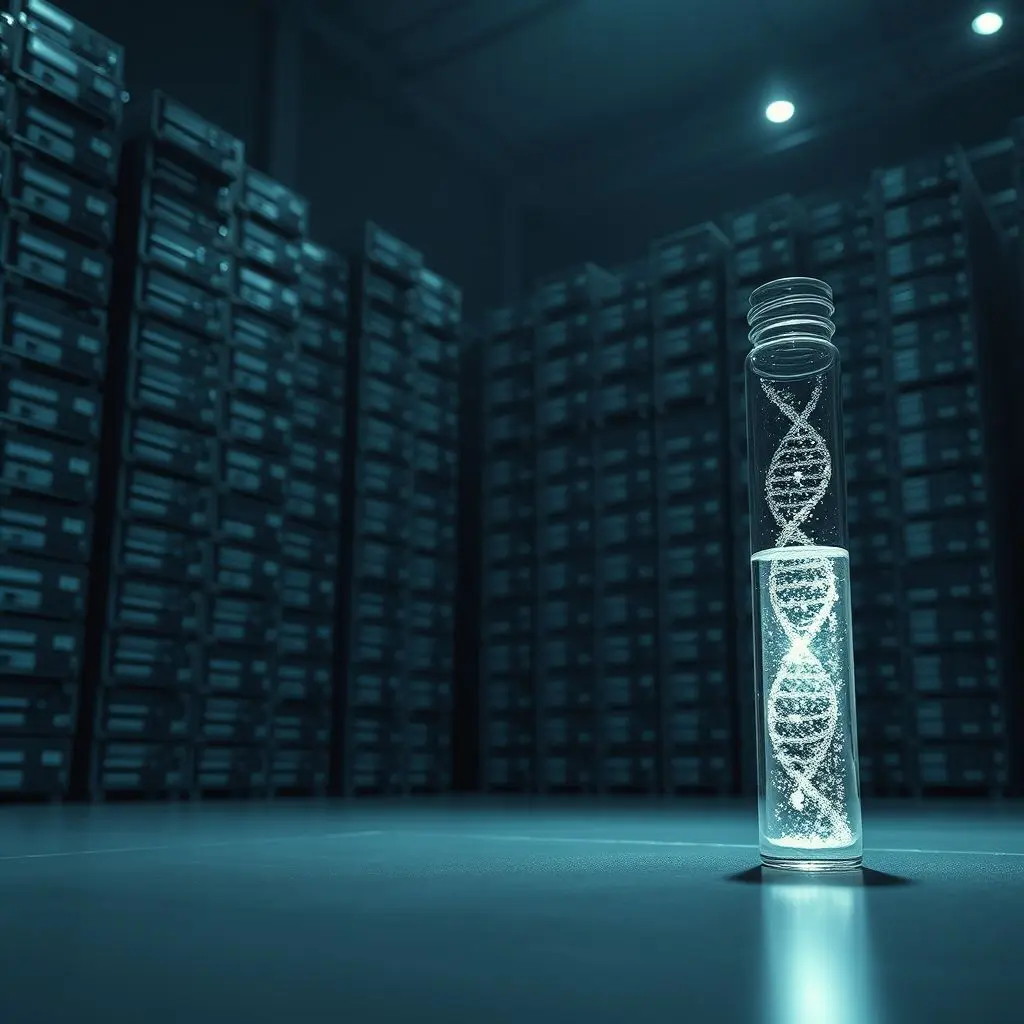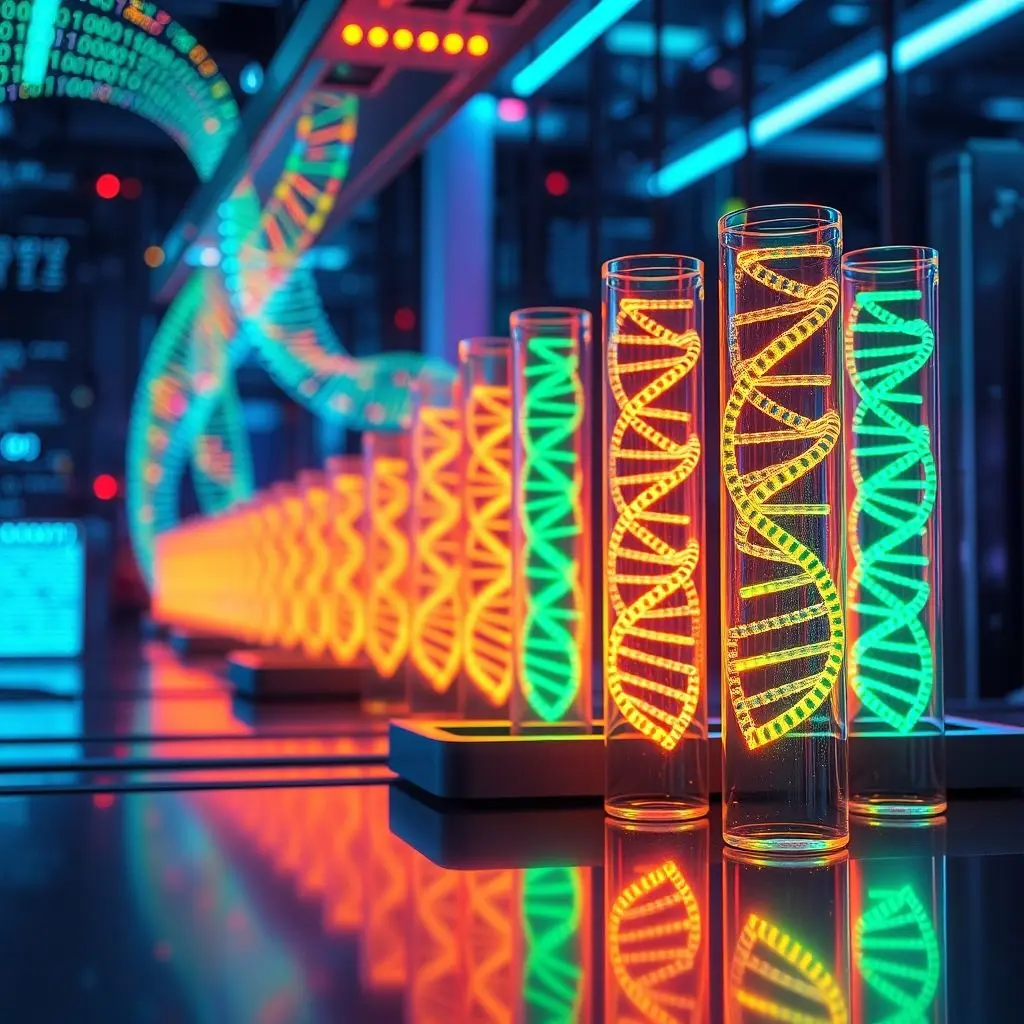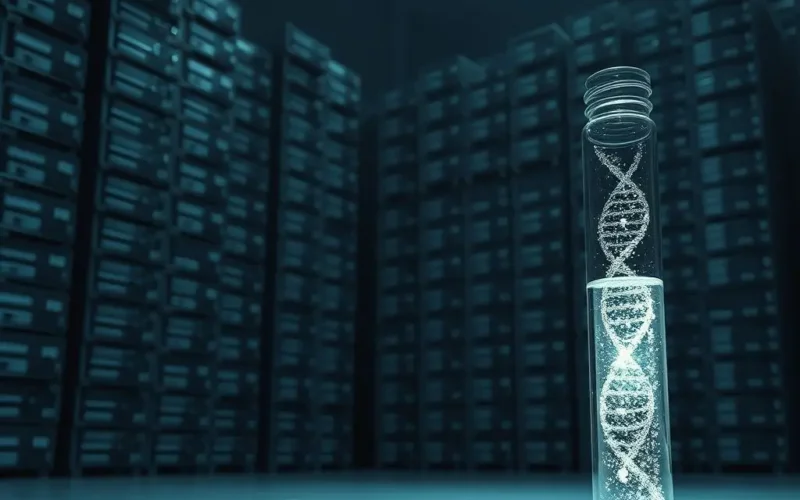Imagine packing your entire digital world — every photo, video, document, and downloaded song — onto something you can barely see. Something smaller than a grain of sand. Sounds like science fiction, right? Well, what if we told you that nature has already perfected such a storage system, and scientists are now learning to harness its incredible power?
That’s the mind-bending potential of storing data in DNA.
Think about it: traditional hard drives are clunky, prone to failure, and have limited lifespans. Cloud storage relies on massive, energy-hungry data centers that still store data on those same vulnerable drives. But DNA? It’s unbelievably dense, capable of storing staggering amounts of information in an incredibly small volume. Plus, under the right conditions, data encoded in DNA could potentially last for thousands, perhaps even tens of thousands, of years. Yes, the very building blocks of life might just become the ultimate archive medium.
Before we dive deeper into this revolutionary concept, take a quick peek at this short video that gives a snappy overview of the amazing potential:
Mind-blowing, isn’t it?
Table of Contents
Why DNA is Nature’s Master Archivist
At its core, DNA (Deoxyribonucleic acid) is an information storage molecule. Every living organism on Earth uses it to store the instructions needed to build and maintain itself. This information is encoded in a sequence of four chemical bases: Adenine (A), Guanine (G), Cytosine (C), and Thymine (T). These bases pair up (A with T, C with G) to form the rungs of the famous double helix ladder.
The magic lies in the *sequence* of these bases. Just like the sequence of 0s and 1s in binary code forms all our digital data, the sequence of A, T, C, and G in a strand of DNA carries genetic information. Scientists have realized that if we can map our binary data (0s and 1s) to these four bases, we could potentially store any digital file — text, images, audio, video — in a synthetic DNA strand.
The density is simply unmatched by current technology. A single gram of DNA could theoretically store exabytes (millions of terabytes) of data. Compare that to the largest hard drives today, which store only a few terabytes. Imagine the world’s data, currently housed in sprawling data centers consuming vast amounts of energy, condensed into a volume no larger than a shoebox.
Longevity is another critical factor. While magnetic tapes and hard drives degrade over decades, DNA, when properly preserved (dry, cool, and dark), can persist for millennia. We routinely extract usable DNA from ancient bones and fossils thousands, even millions, of years old. This makes DNA an ideal candidate for long-term archival storage of humanity’s most important data.

From Binary to Biology: How It Works (Simply Put)
The fundamental process involves translating binary data (our digital 0s and 1s) into the DNA alphabet (A, T, C, G). Various coding schemes exist, but the idea is the same: assign combinations of bases to represent 0s and 1s. For example, a simple scheme might be 00=A, 01=C, 10=G, 11=T. A sequence of binary data would then be converted into a corresponding sequence of DNA bases.
1. Encoding: Your digital file is translated into a sequence of A’s, T’s, C’s, and G’s.
2. Synthesis (Writing): Using chemical processes, synthetic DNA strands are manufactured with the exact sequence of bases corresponding to the encoded data. This is the ‘writing’ process.
3. Storage: The synthesized DNA strands are typically stored in a stable form, often dehydrated and kept in a cool, dry environment. Think tiny vials of DNA powder or droplets.

4. Reading: To retrieve the data, the DNA is sequenced using high-throughput DNA sequencers. This process determines the exact order of bases in the synthesized strands.
5. Decoding: The sequenced DNA data (the sequence of A, T, C, G) is then translated back into the original binary code using the reverse of the encoding scheme.
It sounds straightforward, but each step involves complex biochemical and computational challenges.
Pushing the Boundaries: Current Research and Milestones
Storing data in DNA isn’t just a theoretical concept; it’s an active area of research with significant progress being made. Labs around the world, including those at major tech companies like Microsoft and institutions like the University of Washington, are pushing the limits.
Early demonstrations were modest, storing small amounts of text. But researchers have since stored larger, more complex files, including images, audio, and even full-length high-definition videos. Microsoft, in collaboration with Twist Bioscience, successfully stored and retrieved the Declaration of Independence, the U.N. Human Rights Declaration, Martin Luther King Jr.’s “I Have a Dream” speech, and even a music video — totaling 200 MB of data — in DNA.
Key areas of current research focus on improving the speed, cost, and accuracy of both DNA synthesis (writing) and sequencing (reading). Miniaturization and automation are also crucial for making this technology practical.

Transformative Applications: Beyond Just Storing Files
The implications of practical DNA data storage are vast and could revolutionize several fields:
- Archiving: The most obvious application. Imagine preserving vast archives of historical documents, scientific data, cultural records, and digital heritage for thousands of years without the need for constant migration to new media formats. National archives, libraries, and major research institutions could store petabytes of data in compact, durable form.
- “Cold” Data Storage: For data that needs to be stored long-term but isn’t accessed frequently (like backups, historical logs, or scientific reference data), DNA offers a potential solution that is less energy-intensive than keeping data centers running 24/7.
- Personalized Medicine: DNA sequencing is already central to personalized medicine. Integrating medical data storage directly into biological systems or using synthetic DNA for related data could open new possibilities.
- Molecular Computing: DNA can perform computations based on how strands interact. Storing data within the same medium used for computation could lead to entirely new paradigms of biological computing.
- Art and History: Artists are already experimenting with embedding information (images, messages) into the DNA of living organisms or synthetic DNA art pieces. Future historians might find digital artifacts preserved in ways previously unimaginable.
The ability to store immense amounts of data in such a small space also sparks ideas about embedding data directly into materials, objects, or even potentially biological systems in the future, though this is still firmly in the realm of speculation for now.
The Road Ahead: Challenges and Hurdles
Despite the incredible potential and rapid progress, storing data in DNA faces significant challenges before it becomes a mainstream technology:
- Cost: Synthesizing and sequencing DNA is still incredibly expensive, especially for large volumes of data. While costs are dropping rapidly thanks to advances in medical sequencing, they are nowhere near competitive with the cost of manufacturing hard drives or flash memory.
- Speed: Writing (synthesizing) and reading (sequencing) DNA is currently very slow compared to electronic data transfer speeds. Accessing data takes hours or days, not milliseconds. This limits its use primarily to archival or “cold” storage for now.
- Accuracy: Errors can occur during synthesis and sequencing. Redundancy and error-correction coding schemes are needed to ensure data integrity, adding complexity and cost.
- Scalability: Developing systems that can handle writing and reading exabytes of data efficiently is a massive engineering challenge.
- Random Access: Unlike hard drives where you can quickly jump to any part of the data, retrieving specific information from a pool of DNA strands requires more complex search and retrieval methods, similar to finding a specific sentence in millions of identical books mixed together.
Overcoming these technical and economic hurdles is the focus of much ongoing research and development.

Peering into the Future
While you won’t be replacing your home hard drive with a tube of DNA anytime soon, the trajectory of this technology is promising. Experts predict that DNA data storage could become economically viable for large-scale archival storage within the next decade or two. As synthesis and sequencing technologies continue to improve and drop in price, the dream of storing vast amounts of data in a tiny, stable, and sustainable way draws closer to reality.
This isn’t just about storing more cat videos; it’s about preserving humanity’s collective knowledge for future generations in a format that can withstand the test of time. The idea that the fundamental molecule of life could become the future of information storage is not just cool, it’s a profound merging of biology and technology that could redefine how we think about data itself.
Frequently Asked Questions about DNA Data Storage
Q: Is this technology safe for the environment?
A: Compared to energy-hungry data centers, DNA storage has the potential for a lower environmental footprint, especially for long-term archives. Synthetic DNA is biodegradable, though the chemicals used in synthesis and sequencing need careful management. Research is ongoing into sustainable methods.
Q: Can DNA data storage be hacked?
A: Hacking DNA data storage would require physical access to the DNA and complex lab equipment for sequencing and synthesis, making it very different from digital hacking. However, security concerns exist regarding the integrity of the data during synthesis and retrieval, and ensuring unauthorized synthesis or reading doesn’t occur in industrial settings.
Q: How long can DNA data last?
A: Estimates vary depending on storage conditions, but data encoded in synthetic DNA, when stored in cool, dry, dark conditions, could potentially last for thousands to tens of thousands of years, far exceeding the lifespan of current digital media.
Q: Is this related to genetic engineering?
A: While it uses synthetic DNA and DNA sequencing technology developed for genetics, DNA data storage typically uses non-coding, artificial DNA sequences purely for information storage. It does not involve modifying the DNA of living organisms, though future applications could potentially bridge these fields.
Q: When will this be commercially available?
A: Large-scale archival DNA storage services for institutions and corporations are likely to emerge within the next 5-15 years. Personal use is much further off due to current costs and speed limitations.
The journey to unlock DNA’s full potential as a data storage medium is one of the most exciting frontiers in technology today. It’s a testament to the elegance and efficiency of biological systems and our growing ability to interface with them.





